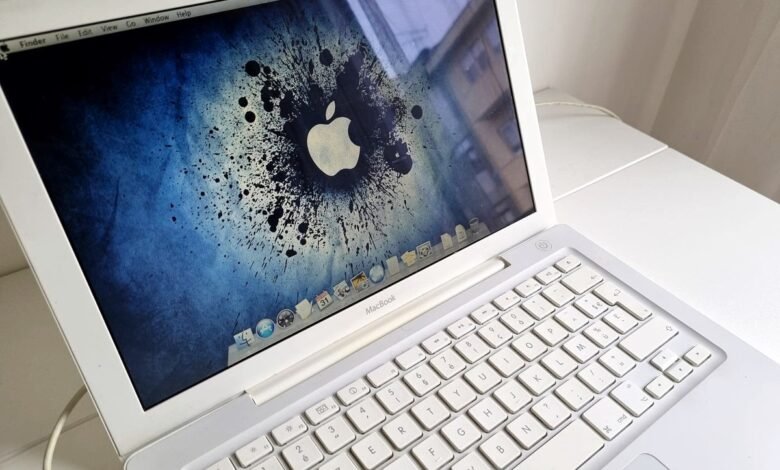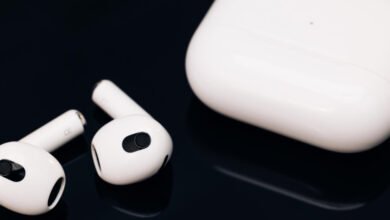Could Apple Bring Back the Plastic MacBook?

KeyTake Away
- There’s no low-cost alternative, such as a polycarbonate “MacBook SE,” in Apple’s notebook lineup.
- Apple can produce high-quality goods at a cheaper cost even with outdated components, as demonstrated by the iPhone SE and entry-level iPads.
- A MacBook made of plastic might be more resilient to everyday wear and tear, come in a wider range of colors, and be less harmful to the environment than an aluminum one.
While I adore my metal unibody MacBook, Apple is creating an opening in its range for a more reasonably priced “MacBook SE” with a plastic casing. They’ve been known to conceal their finest electronics in less expensive phone cases, so why not laptops?
Apple’s First MacBooks Were Plastic!
Plastic laptops are not new to Apple. I still adore the design of the original iBooks, which had a similar color scheme as the iconic iMacs of the era and featured translucent plastic casings that were likely back in style at this time.

But with the iBook, Apple avoided using plastic. The original MacBooks were made of polycarbonate! Up until 2009, you could purchase your sleek new MacBook in polycarbonate. It was inevitable that the first unibody aluminum MacBooks would be available soon after the polycarbonate models were taken out of production, and to this day, this material is still used in all MacBooks.
Related: Dell XPS 16 (9640) Review: A Stylish and Intelligent Laptop
By using aluminum instead of plastic, MacBooks are now extremely thin yet maintain their stiffness and high-end appearance and feel. Though I firmly believe Apple ought to reconsider the polycarbonate materials used in MacBooks, both kinds of systems have a place in their product selection.
Price-wise, there is room below the MacBook Air
I still use a base model MacBook Air (M1 for short), which is among the best computers ever manufactured, in my opinion. This computer cost $1000 when it was first released, and for years after that, the cost of admission into the world of MacBooks has remained quite constant. But, when the M1 and M2 CPUs age and become less expensive, Apple may produce a polycarbonate “MacBook SE” that is more in line with the $500 price range. With similar products like the iPhone SE and entry-level iPads, it offers a less expensive way to enter the Apple ecosystem today by utilizing high-end components from the past.
The sub-$1000 pricing category offers many of options, and a high-end screen and plastic MacBook that isn’t fixated on a pricey unibody metal chassis could likely find a happy home there.
It’s Better Than Ever to Use Plastic Composites
I’m not a big lover of the iPhone, even though I adore my MacBook and iPad. I believe polycarbonate to be a superior material for phones in general, which is one of the reasons I like Android phones over other brands. Over the years, I’ve owned several polycarb phones, and each one has become better and better. Although glass backs on Android phones are currently fashionable, polycarbonate phones are still strong and lightweight. With all of my previous polycarb phones, I have never dropped one and broken my back!
Color Options Would Be Great
As of right now, there aren’t many colors available for MacBooks. That’s it—you can have a couple of varieties of gold, silver, gray, and a sort of black. Given how amazing the new colorful iMacs look, a plastic MacBook would bring back an endless array of color options. That would be a pleasant shift. Recent metal MacBooks certainly look more businesslike than a Dell office laptop with a tie, especially for a brand that targets artists and creatives that “think differently.”
It Could Be More Environmentally Friendly
Aluminum and polycarbonate may both be recycled, although working with polycarbonate requires less energy than working with aluminum. Even for their high-end Macs, I’d be interested to see what Apple might accomplish with plastic nowadays. A Mac that could have its shell easily put in the shredder at the end of its life to be turned into something else sounds like a forward-thinking decision to me! Advanced polycarbonate still feels like a material of the future!
Aluminum Has Drawbacks
There’s no denying that my unibody Mac is an impressive, premium system unmatched in looks and design. However, this cosmetic privilege comes at a cost. Apple has faced accusations of poor repairability for years, largely due to the current MacBook design. Even minor issues with a MacBook often require a top-case replacement, including changing worn keyboard keys or replacing a broken touch bar. This is extremely expensive and often makes it more practical to buy a new MacBook, discarding an otherwise perfectly functional computer. A polycarbonate MacBook would, at the very least, reduce repair costs that typically involve replacing aluminum chassis components.
Another significant downside of the aluminum body is its inability to withstand daily wear and tear effectively. A small scrape or bump can dent or scuff your metal MacBook. Polycarbonate is much more resilient to such damage, and if you have to put a protective case on your metal MacBook, the thinness and aesthetics are lost anyway.
I’m not suggesting that metal MacBooks should be discontinued, but there’s room for diversity in material choice. Apple has previously done excellent work with plastic, and there’s minimal risk that a plastic MacBook would look cheap or unattractive.











